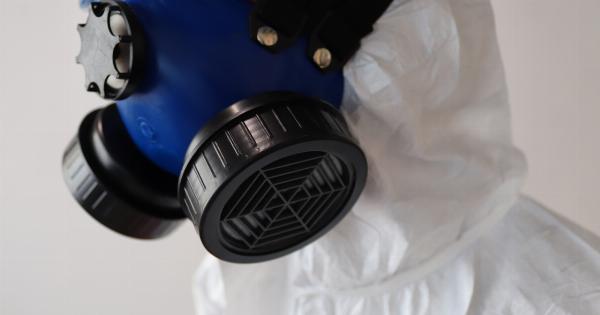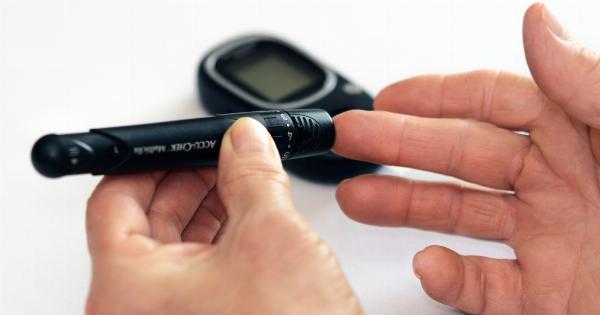Blood in urine, also known as hematuria, can be a distressing symptom that may occur for various reasons. While it can sometimes be a sign of a serious underlying condition, it can also be caused by less severe factors.
If you experience this symptom, it is essential to understand the potential causes and seek appropriate medical guidance.
Causes of Blood in Urine
There are two types of blood in urine: gross hematuria, where the blood is visible to the naked eye, and microscopic hematuria, where the blood can only be detected through laboratory tests.
Several conditions and factors can contribute to blood in the urine:.
1. Urinary Tract Infections (UTIs)
UTIs occur when bacteria enter the urinary tract and multiply in the bladder. This infection can cause inflammation and irritation, leading to bloody urine.
Additional symptoms of a UTI may include a burning sensation during urination, frequent urge to urinate, and cloudy or foul-smelling urine.
2. Kidney Infections (Pyelonephritis)
Kidney infections are a type of urinary tract infection that specifically affects one or both kidneys. Besides blood in the urine, kidney infections often cause fever, severe abdominal pain, frequent urination, and back pain.
3. Kidney Stones
Kidney stones are hard mineral and salt deposits that form in the kidneys. When these stones pass through the urinary tract, they can cause microscopic or visible bleeding.
The presence of kidney stones typically causes intense pain in the lower back, abdomen, or groin, along with other symptoms such as frequent urination and cloudy urine.
4. Bladder or Kidney Trauma
Injuries to the bladder or kidneys, such as from accidents or physical trauma, can result in blood in the urine. Bladder or kidney trauma may require immediate medical attention, as it can cause severe pain and other complications.
5. Enlarged Prostate
An enlarged prostate, also known as benign prostatic hyperplasia (BPH), is a condition commonly experienced by older men. It can cause urinary symptoms such as difficulty starting and stopping urination, weak urine flow, and blood in the urine.
6. Bladder or Kidney Infections
Bacterial infections in the bladder or kidneys, unrelated to urinary tract infections, can also cause hematuria.
These infections often lead to additional symptoms such as pain in the lower abdomen, urinary urgency, and increased frequency of urination.
7. Kidney Disease
Various kidney diseases, including glomerulonephritis and polycystic kidney disease, can cause blood to appear in the urine.
Kidney diseases are often associated with other symptoms like swelling in the legs, ankles, and feet, fatigue, and high blood pressure.
8. Urinary Tract Injuries or Cancer
Both injuries and certain types of cancer can affect any part of the urinary tract, leading to blood in the urine. This can occur in the bladder, kidneys, ureters, or urethra.
Additional symptoms may include pain during urination, frequent infections, and lower back pain.
9. Medications and Blood Thinners
Certain medications, such as blood thinners, can increase the likelihood of blood appearing in the urine.
If you are taking any medications and notice blood in your urine, it is crucial to consult your healthcare provider to determine if the medication is the cause.
10. Physical Activity and Other Factors
Vigorous exercise, such as long-distance running, can sometimes result in blood being present in the urine. Other factors that can cause temporary blood in the urine include menstruation, sexual activity, and dehydration.
The Role of Flexible Cystoscopy
Flexible cystoscopy is a procedure used to examine the bladder and urethra for any abnormalities. It involves the use of a thin, flexible tube equipped with a light and camera, which is inserted through the urethra and into the bladder.
This procedure can be valuable in diagnosing the underlying cause of blood in the urine. Here’s how flexible cystoscopy can help:.
1. Visual Inspection
Flexible cystoscopy allows the urologist to visually examine the interior of the bladder and urethra. By directly observing these structures, they can identify any visible abnormalities, such as tumors, stones, or signs of inflammation.
2. Biopsy and Tissue Sampling
If a suspicious area is found during the visual inspection, the urologist may perform a biopsy to collect tissue samples for further analysis.
These samples can help determine the presence of cancerous or pre-cancerous cells, aiding in making an accurate diagnosis.
3. Detection of Bladder Stones
Bladder stones, which can cause bloody urine, are often not visible on imaging tests alone. Flexible cystoscopy allows for direct visualization and detection of bladder stones, enabling prompt and appropriate treatment.
4. Identifying Sources of Bleeding
During a flexible cystoscopy, the urologist can actively search for the source of bleeding in the bladder or urethra. By identifying the exact location of the bleeding, they can determine the cause and develop an appropriate management plan.
5. Evaluating the Urethra and Prostate
Flexible cystoscopy also provides a comprehensive evaluation of the urethra and prostate. It can help diagnose conditions like urethral strictures, urethral diverticulum, and prostate enlargement, which may contribute to blood in urine.
Managing Blood in Urine
The management of blood in the urine depends on the underlying cause and severity of the condition. Once the cause has been identified using flexible cystoscopy, the urologist can recommend appropriate treatment options:.
1. Antibiotics
If the blood in the urine is due to an infection, antibiotics are prescribed to eliminate the infection and prevent further complications.
Proper antibiotic treatment should address the underlying infection causing hematuria, such as a urinary tract infection or kidney infection.
2. Medications and Therapies
For conditions like kidney stones or an enlarged prostate, medications and specific therapies may be prescribed.
These can help alleviate symptoms, prevent further stone formation, or reduce inflammation in the prostate, consequently improving urinary function.
3. Surgical Intervention
In cases where bladder or kidney tumors, extensive bladder stones, or other structural abnormalities are causing blood in the urine, surgical intervention may be necessary.
The urologist will discuss the available surgical options, such as bladder or kidney stone removal, tumor resection, or urinary tract reconstruction.
4. Monitoring and Surveillance
If no specific treatment is required for mild cases of hematuria, the urologist may recommend regular monitoring and surveillance. This ensures that any changes in the condition can be detected early, allowing for prompt intervention if necessary.
When to Seek Medical Assistance
Although blood in urine can sometimes resolve on its own, it is crucial to consult a healthcare professional if you experience this symptom. Seek immediate medical assistance if you notice:.
- Intense abdominal or back pain
- Fever and chills
- Difficulty urinating or decreased urine output
- Severe pain or inability to pass urine
- Blood clots in the urine
These symptoms suggest a more severe underlying condition that requires urgent medical attention.
In Conclusion
Blood in the urine should never be ignored, as it can be an indication of various medical conditions.
Consulting a healthcare professional and undergoing a flexible cystoscopy can help identify the underlying cause, allowing for appropriate management and timely treatment. Regular medical check-ups and maintaining a healthy lifestyle are also essential in preventing and managing blood in the urine.































